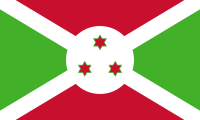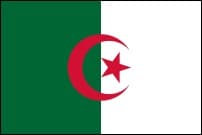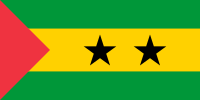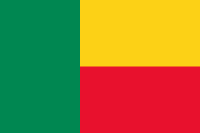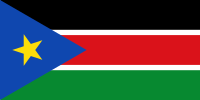
World Insurance Company Logos – List of African Insurance Company Logos and Names. There are many insurance companies operating in Africa, offering a range of products and services to customers across the continent. By clicking on the flag of each African country, you will have easy access to the logos and links of each insurer.
Insurance in Africa
Here are a few examples of prominent insurers from Africa:
These are just a few examples of insurers operating throughout Africa. There are many more companies offering a variety of assurance products and services to customers across the continent.
List of African Insurance Companies Logos and Names
List of African Insurance Companies logos and Names. Find out the best Insurance throughout Africa.
Click on the flag of each country to see the insurers in the selected areas to find the best insurer on the basis of costs, coverage, customer service and claim assistance. This allows you to immediately have updated information about the insurance each company has on its own webpage.
Select the insurance company you trust.
Obtain the logos and names of insurers from each country in Asia, the Americas, the Caribbean, Europe, and Oceania from the Insurance Companies page.
Find the best Insurance Companies
List of insurance companies in Africa – How find the best Insurers.
Some Tips:
1- Find the right coverage
First, it’s important to gather information about the right coverage, and obtain insurance quotes from, a variety of insurers as part of your overall selection process. In order to do that, begin by determining the type of coverage you need in order to make a right comparison across multiple companies.
Now it’s time to research the types of insurers from which to obtain that coverage.
2-Check the licensure status of insurers throughout Africa
Insurers must be licensed by the country in which they sell insurance. For added peace of mind, be sure you’re buying coverage from a licensed provider in your area by checking with the department of insurers of your Country, either online or by phone.
3- Check the financial stability of the companies
Finding out the financial stability of an insurer. One can research the provider’s financial strength ratings, in the websites of companies such as A.M. Best, Standard & Poor’s, Moody’s or Fitch. While most of the major insurers are safe bets, this is especially helpful when considering smaller, lesser-known providers.
4- Customer service and claims support
Check consumer complaint ratios. Many departments of assurance websites publish consumer complaint ratios for the insurance providers. A consumer complaint ratio tells you how many complaints an insurer received for every 1,000 claims its policyholders filed.
It’s also a good idea to check a company’s complaint ratio in several other countries for a company might have great ratings in one, but not-so-great ratings in another. For added protection, look for companies with low consumer complaint ratios in a variety of countries.
Locate the insurer you trust.
Healthcare in Africa
Healthcare in Africa faces significant challenges, but also shows signs of progress. Here are some key aspects regarding health in Africa:
- Disease Burden: Africa is burdened by a high prevalence of infectious diseases such as HIV/AIDS, malaria, tuberculosis, and neglected tropical diseases. These diseases contribute to significant morbidity and mortality rates in the region.
- Maternal and Child Health: Maternal and child health indicators in Africa vary across countries. Some countries have made progress in reducing maternal and child mortality rates, while others still face challenges. Factors such as access to quality healthcare, skilled birth attendance, nutrition, and education play crucial roles.
- Healthcare Infrastructure: Many African countries face challenges in healthcare infrastructure, including a shortage of healthcare facilities, medical personnel, and resources. Rural areas are often underserved, and there are disparities in access to health care between urban and rural populations.
- Access to Essential Medicines: Access to essential medicines remains a challenge in many parts of Africa. Limited availability, affordability, and inadequate distribution systems contribute to difficulties in accessing medications for common diseases.
- Health Systems Strengthening: Efforts are underway to strengthen health systems in Africa. This includes improving healthcare infrastructure, increasing the number of healthcare workers, enhancing healthcare financing mechanisms, and strengthening health information systems.
- Epidemics and Emergencies: Africa has faced several epidemics and emergencies, including the Ebola outbreak in West Africa and the ongoing COVID-19 pandemic. These events have highlighted the importance of strong public health systems, emergency preparedness, and response capacities.
- Health Partnerships and International Aid: Africa receives support from international organizations, governments, and non-governmental organizations to improve healthcare. Initiatives such as the Global Fund to Fight AIDS, Tuberculosis, and Malaria, and Gavi, the Vaccine Alliance, have played crucial roles in expanding access to health care services, vaccines, and treatments.
- Innovative Solutions: Africa has shown innovation in addressing healthcare challenges. For example, mobile health (mHealth) technologies have been used to improve healthcare delivery, access to medical information, and disease surveillance in remote areas.
- Progress and Achievements: Despite the challenges, Africa has made significant progress in certain health indicators. For instance, the continent has witnessed improvements in life expectancy, reduction in child mortality rates, and increased access to HIV/AIDS treatment.
- Future Priorities: Future priorities for health in Africa include strengthening primary health care systems, improving maternal and child health, enhancing disease surveillance and response capacities, addressing non-communicable diseases, promoting health education, and achieving universal health coverage.
Economy of African countries
The economies of African countries are diverse and vary significantly from one nation to another. Here is a brief overview of the economies of some key African countries:
- Nigeria: Nigeria has the largest economy in Africa, primarily driven by oil exports. However, the country is also diversifying its economy by focusing on sectors such as agriculture, manufacturing, and services. It has a growing middle class and is a major player in the telecommunications and financial services.
- South Africa: South Africa has one of the most developed economies in Africa. It is rich in mineral resources and has a well-established financial and services sector. Manufacturing, tourism, and agriculture are also important contributors to its economy.
- Kenya: Kenya is known for its vibrant services sector, particularly in telecommunications, finance, and tourism. It has a diverse economy with agriculture (including tea, coffee, flowers), manufacturing, and technology playing significant roles.
- Egypt: Egypt has a large and diversified economy, with sectors such as tourism, agriculture, manufacturing, and services contributing significantly. The Suez Canal and remittances from Egyptians abroad are important sources of foreign exchange.
- Morocco: Morocco has a diverse economy with key sectors including agriculture, mining, manufacturing, and tourism. It is one of the largest producers of phosphates and has made significant investments in renewable energy.
- Ethiopia: Ethiopia is one of the fastest-growing economies in Africa. Its economy is mainly agrarian, with agriculture, employing a large portion of the population. The country is also investing in infrastructure development and attracting foreign investment in manufacturing and textiles.
- Ghana: Ghana has experienced relatively stable economic growth in recent years. It is a major exporter of cocoa, gold, and oil. The country is also investing in sectors such as manufacturing, services, and technology.
- Angola: Angola is a major oil producer, and oil exports form a significant portion of its economy. The country is working to diversify its economy by investing in sectors such as agriculture, mining, and tourism.
- Ivory Coast (Côte d’Ivoire): Ivory Coast is a leading producer of cocoa, and agriculture, including cocoa processing, is a key sector. It is also focusing on diversification by developing industries such as manufacturing, textiles, and energy.
- Tanzania: Tanzania’s economy is driven by agriculture, mining, tourism, and manufacturing. It has significant natural resources, including minerals and natural gas, and is attracting investment in infrastructure and energy projects.
View the logos of insurers throughout the world.
World Insurance Companies Logos – List of African Insurance Companies.
Go to American Central Insurance
Check Insurance in South America






